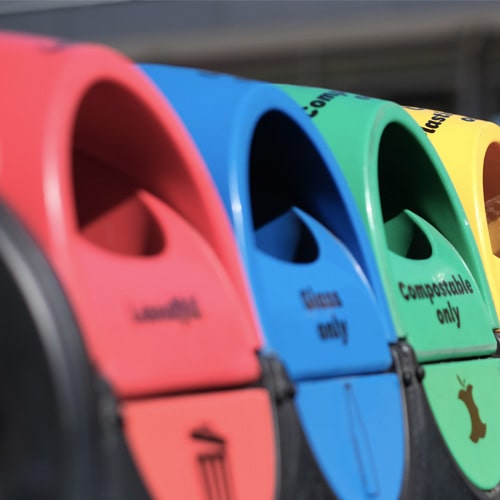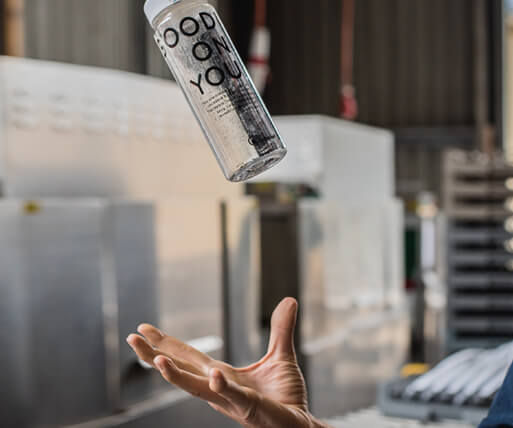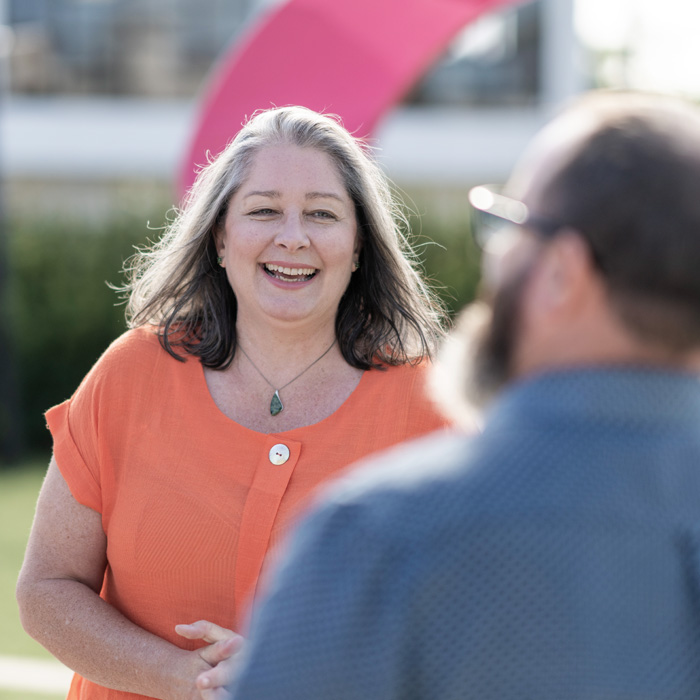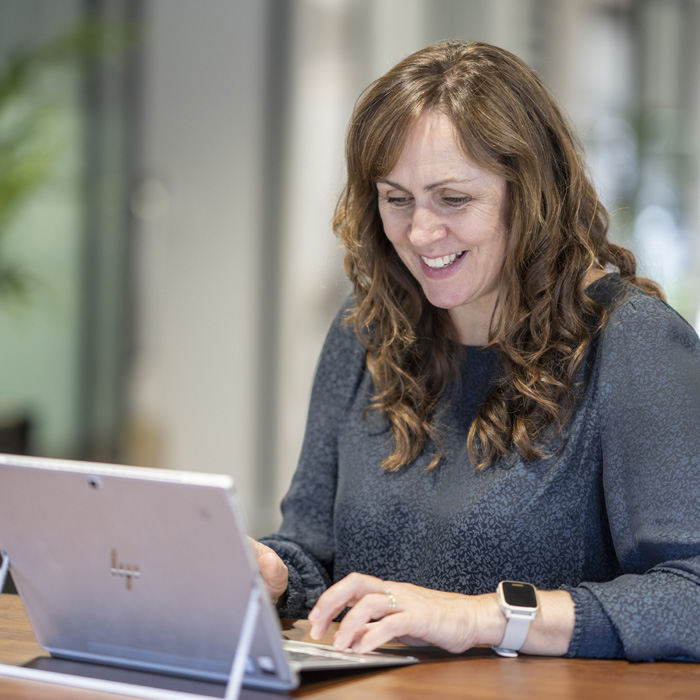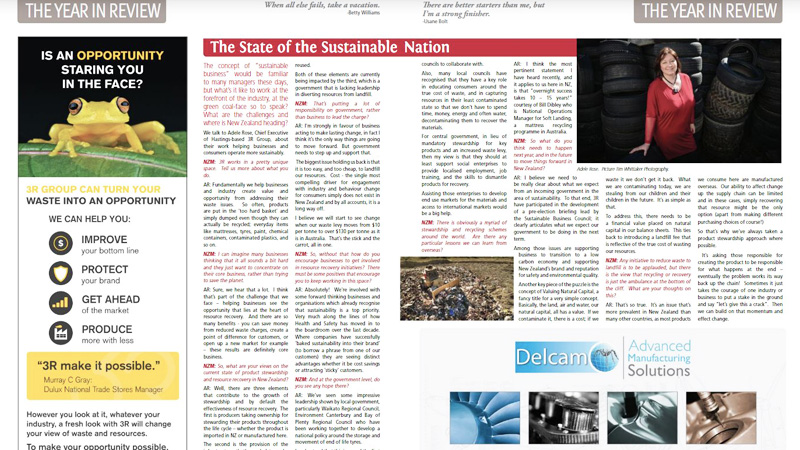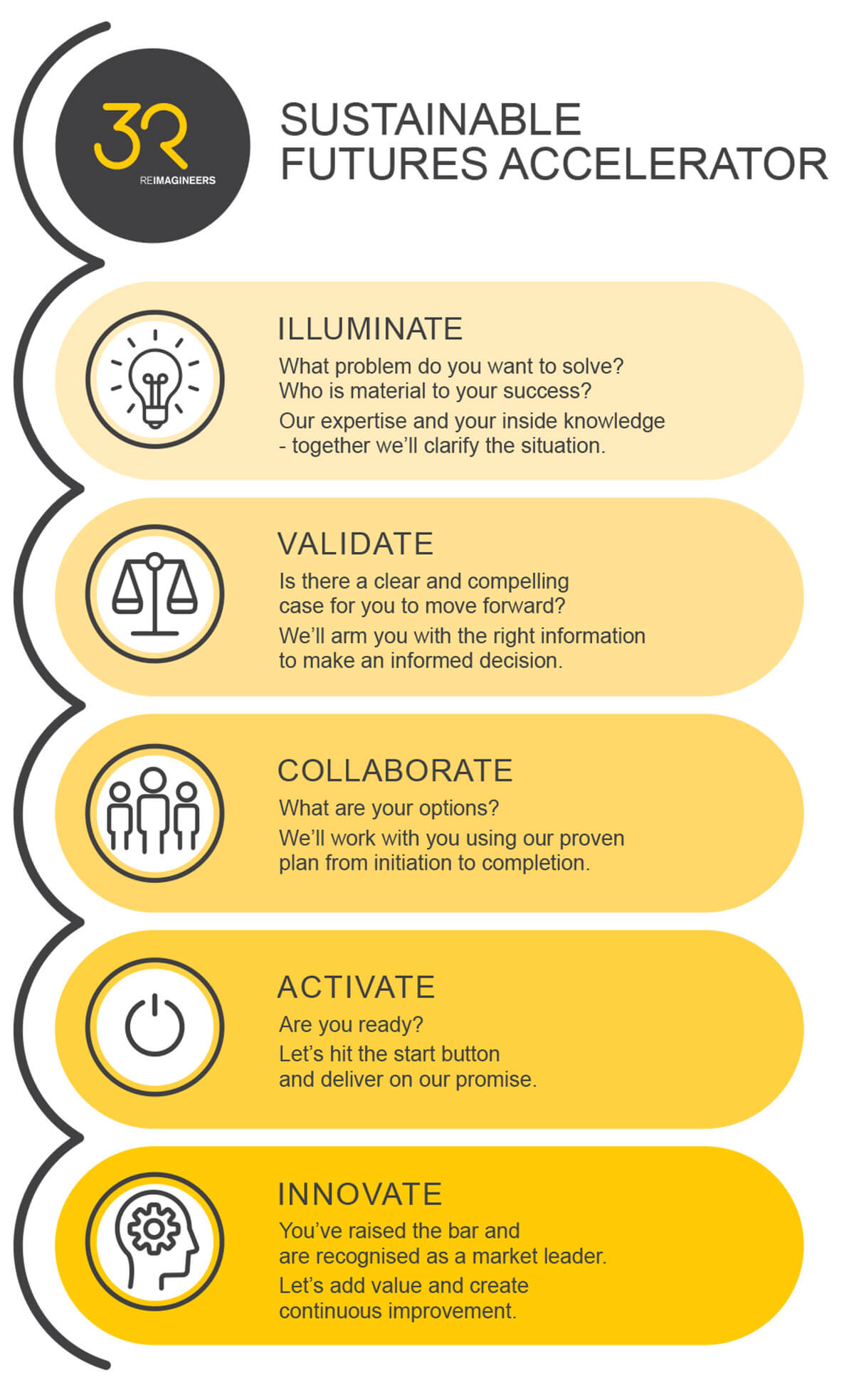The State of the Sustainable Nation
The concept of “sustainable business” would be familiar to many managers these days, but what’s it like to work at the forefront of the industry, at the green coal-face so to speak? What are the challenges and where is New Zealand heading?
NZ Manufacturer spoke to Adele our Chief Executive about their work helping businesses and consumers operate more sustainably.
NZM: 3R works in a pretty unique space. Tell us more about what you do.
AR: Fundamentally we help businesses and industry create value and opportunity from addressing their waste issues. So often, products are put in the ‘too hard basket’ and simply dumped even though they can actually be recycled; everyday items like mattresses, tyres, paint, chemical containers, contaminated plastics, and so on.
NZM: I can imagine many businesses thinking that it all sounds a bit hard and they just want to concentrate on their core business, rather than trying to save the planet.
AR: Sure, we hear that a lot. I think that’s part of the challenge that we face – helping businesses see the opportunity that lies at the heart of resource recovery. And there are so many benefits – you can save money from reduced waste charges, create a point of difference for customers, or open up a new market for example – these results are definitely core business.
NZM: So, what are your views on the current state of product stewardship and resource recovery in New Zealand?
AR: Well, there are three elements that contribute to the growth of stewardship and by default the effectiveness of resource recovery. The first is producers taking ownership for stewarding their products throughout the life cycle – whether the product is imported in NZ or manufactured here. The second is the provision of the infrastructure that’s needed to make resource recovery possible – those, including social enterprises, which can take the products we discard and recover the maximum resources from them, landfilling only what can’t be reused. Both of these elements are currently being impacted by the third, which is a government that is lacking leadership in diverting resources from landfill.
NZM: That’s putting a lot of responsibility on government, rather than business to lead the charge?
AR: I’m strongly in favour of business acting to make lasting change, in fact I think it’s the only way things are going to move forward. But government needs to step up and support that. The biggest issue holding us back is that it is too easy, and too cheap, to landfill our resources. Cost – the single most compelling driver for engagement with industry and behaviour change for consumers simply does not exist in New Zealand and by all accounts, it is a long way off. I believe we will start to see change when our waste levy moves from $10 per tonne to over $130 per tonne as it is in Australia. That’s the stick and the carrot, all in one.
NZM: So, without that how do you encourage businesses to get involved in resource recovery initiatives? There must be some positives that encourage you to keep working in this space?
AR: Absolutely! We’re involved with some forward thinking businesses and organisations which already recognise that sustainability is a top priority. Very much along the lines of how Health and Safety has moved in to the boardroom over the last decade. Where companies have successfully ‘baked sustainability into their brand’ (to borrow a phrase from one of our customers) they are seeing distinct advantages whether it be cost savings or attracting ‘sticky’ customers.
NZM: And at the government level, do you see any hope there?
AR: We’ve seen some impressive leadership shown by local government, particularly Waikato Regional Council, Environment Canterbury and Bay of Plenty Regional Council who have been working together to develop a national policy around the storage and movement of end of life tyres. I understand that this is one of the first times this has been attempted – a real achievement given that they have 67 territorial authorities and 11 regional councils to collaborate with.
Also, many local councils have recognised that they have a key role in educating consumers around the true cost of waste, and in capturing resources in their least contaminated state so that we don’t have to spend time, money, energy and often water, decontaminating them to recover the materials.
For central government, in lieu of mandatory stewardship for key products and an increased waste levy, then my view is that they should at least support social enterprises to provide localised employment, job training, and the skills to dismantle products for recovery. Assisting those enterprises to develop end use markets for the materials and access to international markets would be a big help.
NZM: There is obviously a myriad of stewardship and recycling schemes around the world. Are there any particular lessons we can learn from overseas?
AR: I think the most pertinent statement I have heard recently, and it applies to us here in NZ, is that “overnight success takes 10 – 15 years!” courtesy of Bill Dibley who is National Operations Manager for Soft Landing, a mattress recycling programme in Australia.
NZM: So what do you think needs to happen next year, and in the future to move things forward in New Zealand?
AR: I believe we need to be really clear about what we expect from an incoming government in the area of sustainability. To that end, 3R have participated in the development of a pre-election briefing lead by the Sustainable Business Council; it clearly articulates what we expect our government to be doing in the next term. Among those issues are supporting business to transition to a low carbon economy and supporting New Zealand’s brand and reputation for safety and environmental quality.
Another key piece of the puzzle is the concept of Valuing Natural Capital, a fancy title for a very simple concept. Basically, the land, air and water, our natural capital, all has a value. If we contaminate it, there is a cost; if we waste it we don’t get it back. What we are contaminating today, we are stealing from our children and their children in the future. It’s as simple as that. To address this, there needs to be a financial value placed on natural capital in our balance sheets. This ties back to introducing a landfill fee that is reflective of the true cost of wasting our resources.
NZM: Any initiative to reduce waste to landfill is to be applauded, but there is the view that recycling or recovery is just the ambulance at the bottom of the cliff. What are your thoughts on this?
AR: That’s so true. It’s an issue that’s more prevalent in New Zealand than many other countries, as most products we consume here are manufactured overseas. Our ability to affect change up the supply chain can be limited and in these cases, simply recovering that resource might be the only option (apart from making different purchasing choices of course!) So that’s why we’ve always taken a product stewardship approach where possible. It’s asking those responsible for creating the product to be responsible for what happens at the end – eventually the problem works its way back up the chain! Sometimes it just takes the courage of one industry or business to put a stake in the ground and say “let’s give this a crack”. Then we can build on that momentum and effect change.

